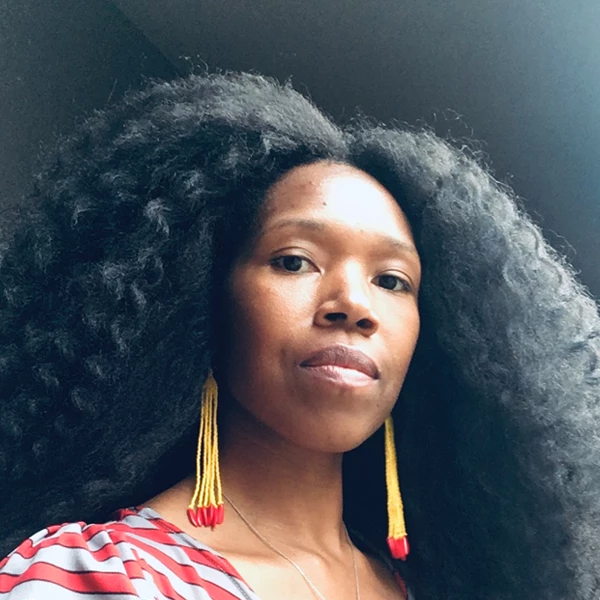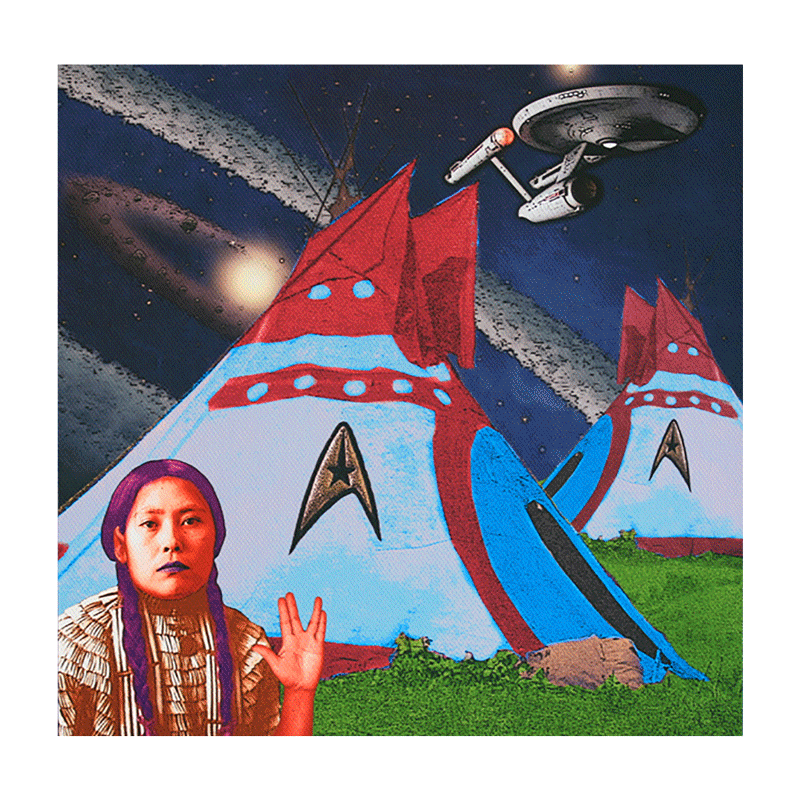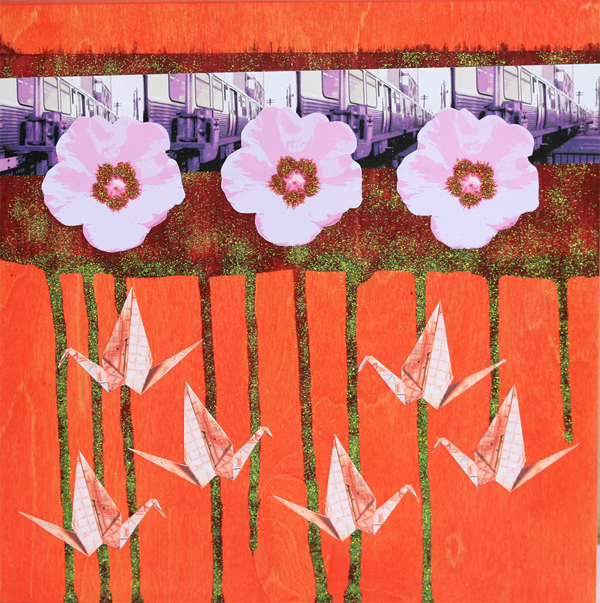Many Indigenous communities, nations, and individuals navigate questions of identity and authenticity in diverse ways. Centuries of removal from homelands (National Museum of the American Indian, 2016), theft of children through boarding school and settler adoption programs (Nagle, 2021), and intentional elimination of cultural lifeways (Wolfe, 2006) alienated many Indigenous peoples from communities and practices. Consequently, many Indigenous communities and individuals are engaged in an active process of reconnecting with and revitalizing Indigenous cultural identities. The Myaamia people, for example, are actively engaged in cultural and linguistic revitalization work and develop programming to help young Myaamia citizens foster Myaamia identity.
Indigenous people and communities must also contend with settler appropriation of Indigenous identity, or ‘Pretendianism.’ Settlers may falsely adopt Indigenous identity because doing so helps them professionally as artists or academics (taking up space from Indigenous artists and academics), or because it alleviates feelings of settler guilt (Tuck & Yang, 2012). Some American pretendians may unknowingly falsely claim Indigenous identity, based on, for example, a blood or DNA test, if they are ignorant of the fact that each of the 574 federally-recognized tribal nations have their own specific constitutional criteria for citizenship and criteria for community membership (National Congress of American Indians, 2020). However, regardless of whether the ethnic fraud is committed knowingly or not, the harm that results is real – for example, resources and supports can be diverted from Indigenous people to non-Indigenous people, and Indigenous cultural practices may be appropriated and misrepresented by non-Indigenous people.
Reading, Listening, Watching, and Learning
Explore the podcast, video, and readings below to encounter some different perspectives on Indigenous identity and authenticity. Read/watch/listen to at least two.

In this short video, host Che Jim (enrolled member, Navajo Nation) summarizes common stereotypes about “authentic” Indigenous identity, and how Indigenous identity has been defined through history and today by both Indigenous and settler individuals and governments.

PBS Voices. (2023, November 15). What does “authentically” Indigenous look like? [ video ]. YouTube.
In this short video produced by Dr. Lee Francis IV (enrolled citizen, Laguna Pueblo), correspondent Cheyenne Bearfoot (member, Chiricahua Apache Nation) explores how cultural images of what is “authentically” or “traditionally” Indigenous can often be settler fictions, or rooted in settler conceptions of Indigenous peoples as locked in the past. She also interviews contemporary designers who are developing conceptions of contemporary Indigenous identities.

In this episode of the Code Switch podcast, the hosts explore multiple instances of pretendianism, from prominent public figures to folks quietly lying on college applications, and discuss the consequences. They also discuss some of the various factors that may contribute to Indigenous identity for different communities.

Ironstrack, G. & Shea, H. (2021). Naming as a Source of Resiliency. Aacimotaatiiyankwi.
In this piece, Myaamia citizens Kiišikohkwa ‘Haley Shea’ and Meemeehšhkia ‘George Ironstrack’ discuss their personal narratives in coming to their Myaamia names, and how their Myaamia senses of identity developed in relation to the settler and Myaamia cultures and communities they lived and live in.

In this short piece, Amber Starks (enrolled citizen of the Muscogee (Creek) Nation), discusses the historic roots of Black-Native identity, and how these roots inform contemporary realities of Black citizens of tribal nations.
Reflect After Reading
- After engaging with the above readings/media, what are some of the internal and external challenges some Indigenous folks navigate with respect to forming, finding, accepting, and/or living an identity that connects to historic and contemporary Indigenous cultures?
- What kinds of challenges (internal and external) have you encountered in developing an identity in relationship to your heritage, culture, community, and/or upbringing?
- What kinds of challenges (internal and external) have you encountered in developing an identity in relationship to your heritage, culture, community, and/or upbringing?
- Please take a look at this poster, developed by the United States Department of the Interior asking people to report cases of artistic pretendian fraud to the Indian Arts and Crafts Board (part of the US. Dept. of the Interior). Then, please watch this 10-minute video artwork, “Fake: Part 2,” by artist Elisa Harkins (enrolled member, Muscogee Nation) in which she calls the IACB to turn herself in for creating ‘fake’ Indigenous art when making this performance piece.
- How do the ‘crimes’ Harkins confesses to highlight the relationship between the complexities of Indigenous identity-formation in North America and bureaucratic structure of U.S. Government systems (that police the authenticity of Indigenous artworks to protect against the legitimate cultural and material harm of ethnic fraud)?
- How do the ‘crimes’ Harkins confesses to highlight the relationship between the complexities of Indigenous identity-formation in North America and bureaucratic structure of U.S. Government systems (that police the authenticity of Indigenous artworks to protect against the legitimate cultural and material harm of ethnic fraud)?
- A common (if imperfect) activity for exploring Identity in educational contexts is to fill out an “identity wheel” describing one’s relationship to different types of communities, groups, places, and conditions. ( Congdon, Stewart, and White explored using this in art ed in 2002. )
- Take a few minutes to complete this Identity Wheel developed in 2021 by the United Way of Southeastern Michigan. The sheet includes example responses for each category, if you are unsure of any labels.
- Note: The example responses list ‘Native American’ as a response for ‘Race’ and ‘Mohawk’ as a response for ‘Ethnicity, Heritage + Culture’ but not all Indigenous respondents would use these categories in this way. It is worth noting that classifying Indigenous people as a race and not a political status has been used as a strategy to erode Indigenous sovereignty.
- Note: The example responses list ‘Native American’ as a response for ‘Race’ and ‘Mohawk’ as a response for ‘Ethnicity, Heritage + Culture’ but not all Indigenous respondents would use these categories in this way. It is worth noting that classifying Indigenous people as a race and not a political status has been used as a strategy to erode Indigenous sovereignty.
- Were any of the segments difficult for you to complete? What factors impact the way you answer this question? (For example, it is not uncommon for white settler Americans to have difficulty identifying an ethnic or cultural identity. What factors may impact this phenomenon?)
- If you live in a colonized nation such as the United States, how do different aspects of your identity relate to the colonial history, and present dominant culture, of that nation? How are different aspects of your identity benefitted or harmed by that present dominant culture?
- For example, the author of this resource has ancestors who arrived on this land on the Mayflower as part of the earliest Anglophone colonial project on this land. He also has ancestors who arrived in the early 20th century from Central Europe who were initially discriminated against as Slavic Catholic immigrants but who were eventually embraced by dominant white settler culture. As a contemporary white American he continues to hold a place of privilege in the dominant white settler culture.
- For example, the author of this resource has ancestors who arrived on this land on the Mayflower as part of the earliest Anglophone colonial project on this land. He also has ancestors who arrived in the early 20th century from Central Europe who were initially discriminated against as Slavic Catholic immigrants but who were eventually embraced by dominant white settler culture. As a contemporary white American he continues to hold a place of privilege in the dominant white settler culture.
- Take a few minutes to complete this Identity Wheel developed in 2021 by the United Way of Southeastern Michigan. The sheet includes example responses for each category, if you are unsure of any labels.
- Did your upbringing (in a settler, Indigenous, or blended context) cultivate a particular image of an ‘Indigenous Individual’? If so, what cultural norms or experiences informed that image? How does that image compare to some of the discussions of identity and authenticity in the readings/media above?
Exemplar Artists + Works
Explore these works by contemporary Indigenous artists/thinkers/makers who are engaging with concepts around Indigenous futurity.
As you explore, choose two works to research in greater depth which you may include as exemplars in your own lesson on identity. Consider: How do these artworks question settler assumptions about Indigenous identity? How do these different expressions of identity by different Indigenous artists use different ideas, strategies, and terms for describing identity?

Sadie Red Wing
(enrolled member, Spirit Lake Sioux Tribe)
Casey Koyczan (Tłı̨chǫ citizen, Dene)

Elisa Harkins (enrolled member, Muscogee (Creek) Nation)

Elisa Harkins (enrolled member, Muscogee (Creek) Nation)

Debra Yepa-Pappan (Enrolled member, Jemez Pueblo)

Debra Yepa-Pappan (Enrolled member, Jemez Pueblo)
Lesson Development
Having explored the above concepts and materials, now it’s your turn to plan an arts learning experience.
- The targeted age range, materials, and art activities are yours to choose.
- You are required to meaningfully include at least two of the above artists (feel free to explore the site for more!)
- You are encouraged to develop a lesson that involves some sort of digital making, but a meaningful physical making experience rooted in ideas from these digital artists is also a viable approach!
- Please use this lesson plan template to structure your planning
Consider: How might students design digital mappings or places that resist, subvert, or operate outside of settler-colonial understandings of land and place?
- How does the positionality (settler or Indigenous) of the student artist impact their approach to this problem?
- How does the positionality of you as teacher (settler or Indigenous) impact your approach to teaching this concept?
This page last updated on April 23, 2024.
